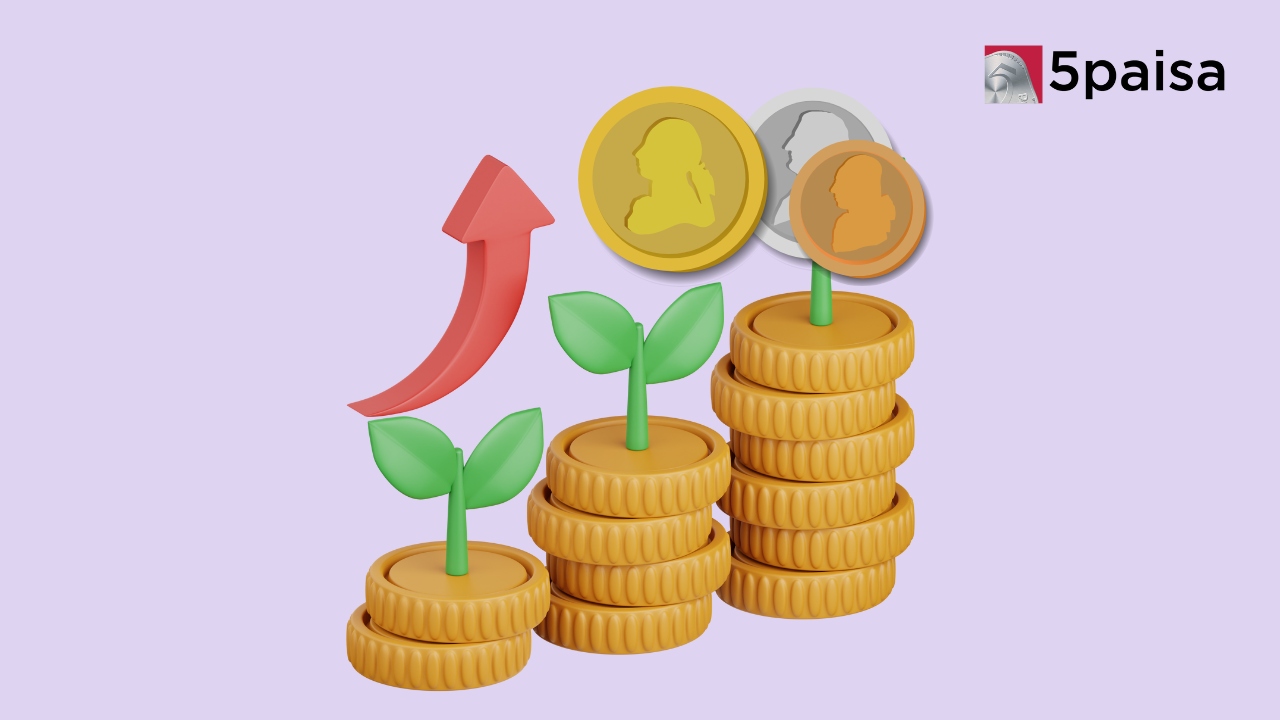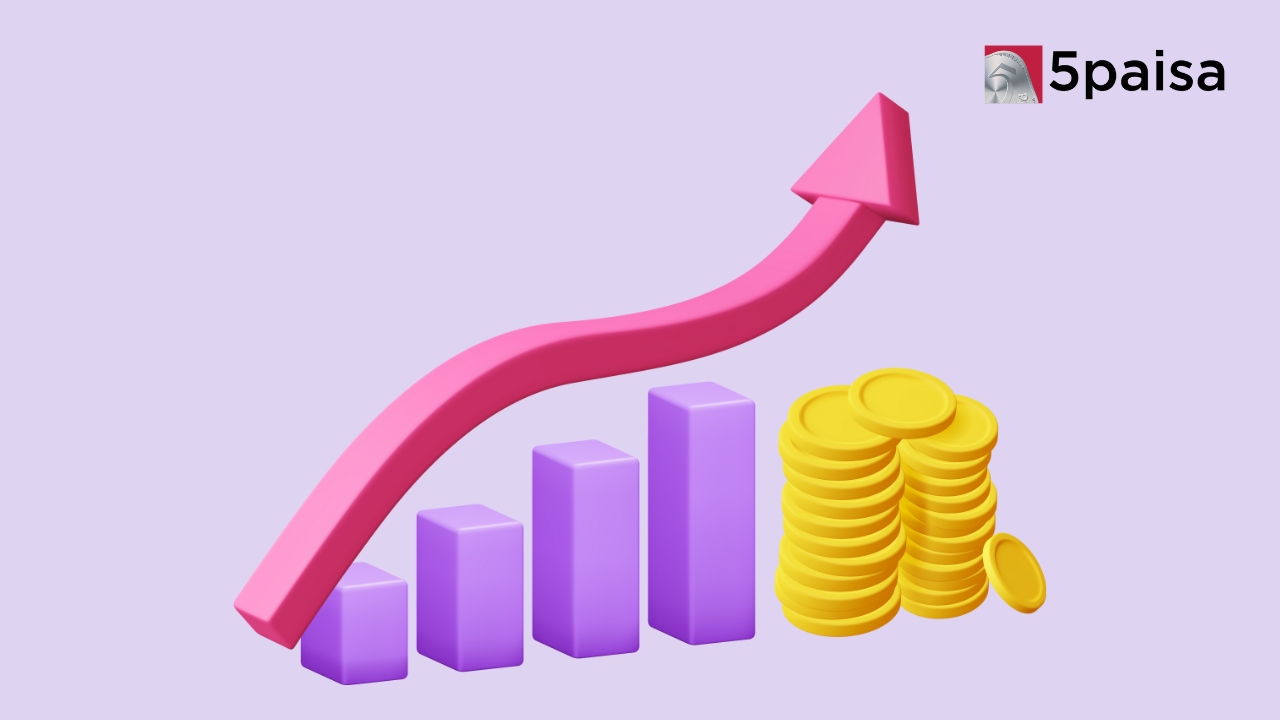Multibaggers Penny Stocks For 2025
Top 3 Inexpensive Stocks to Buy Before 2023 Ends

Last Updated: 6th August 2024 - 02:57 pm
There's a common misconception that stock market investment requires a substantial financial commitment. But here's the truth: You don't need a fortune to embark on your stock market journey.
At its core, investing in stocks is about identifying opportunities that can yield significant returns over time. Sometimes, gems in the stock market trade below their true value due to various reasons like market misjudgements, company news, or temporary investor scepticism. These stocks represent solid businesses with strong fundamentals and a history of success.
Today, we're excited to bring you a blog that shatters the myth of high entry barriers. We've meticulously curated a list of top-notch stocks, all priced under Rs. 100, that have been scrutinized through fundamental analysis and trusted by seasoned investors. These stocks hold the potential for remarkable growth in the near future.
Discover a world of possibilities as we unveil the best stocks under Rs. 100, paving the way for your prosperous investment journey!"
Thing must consider before investing in stocks under ₹100
1. Value Investing: You don't need a fortune to be a value investor. With a long-term outlook and patience, you can find great opportunities in stocks under Rs 100. Invest in strong companies and wait for them to grow over time, focusing on long-term gains rather than short-term fluctuations.
2. Harness the Power of Compounding: Value investing allows you to benefit from compounding. Reinvesting your returns and dividends from Rs 100 stocks can lead to significant growth in your profits without extra effort. Let your money work for you and watch it grow steadily over the years.
3. Lower Risk: Value investing is known for its low-risk approach. By holding onto stocks under Rs 100 for the long haul, you can avoid being swayed by daily market ups and downs. This strategy helps build a stable and diverse portfolio, preventing hasty decisions and impulsive investments.
Invest wisely in stocks under ₹ 100, and you'll discover a path to potential financial success."
Here is a brief overview of the stocks that can be bought under ₹100
1. Indian Oil Corporation Ltd.
Key Highlights
I. Robust Refining and Marketing Margins: IOCL reported a strong performance in Q1, with EBITDA at ₹ 222 billion, representing a significant YoY growth of 13 times and a QoQ increase of 44%. The beat was largely driven by better-than-expected performance from the marketing segment. Refining and marketing margins remained robust, supporting earnings.
II. Favourable Refining Margins: Despite a decline in crude throughput by 1% YoY and 2% QoQ, IOCL's reported Gross Refining Margin (GRM) for Q1 was USD 8.34/bbl. The derived refining EBITDA declined YoY and QoQ due to moderation in product cracks from abnormally higher levels seen last year. However, the company is expected to maintain strong refining margins.
III. Improved Marketing Margins: Domestic marketing sales volume showed marginal growth of 0.2% YoY and 1% QoQ, while exports declined. The blended gross marketing margin for the quarter stood at ₹ 9.2/lit, supported by higher margins for petrol and diesel due to moderated crude oil prices.
Key Risks
I. Volatility in Commodity Prices: IOCL's financial performance is sensitive to fluctuations in crude oil and petrochemical product prices. Adverse movements in commodity prices can impact refining margins, marketing segment earnings, and overall profitability.
II. Petchem Segment Weakness: The petrochemical segment's weaker performance in Q1 and its vulnerability to market dynamics pose a risk to IOCL's overall financial performance. Any adverse changes in demand or pricing may further impact the segment's earnings.
III. Elevated Debt Levels: While IOCL's gross debt declined to ₹ 1.1 trillion as of Jun-23 end, it remains at elevated levels. High debt can lead to increased interest costs and limit the company's financial flexibility.
Financial Performance
I. Strong EBITDA and APAT: IOCL's Q1FY24 EBITDA of ₹ 222 billion and APAT of ₹ 138 billion exceeded expectations, driven by robust refining and marketing margins. This indicates the company's ability to capitalize on favourable market conditions.
II. Refining Segment: Despite a slight decline in crude throughput, IOCL's refining segment reported a GRM of USD 8.34/bbl for Q1. However, the derived refining EBITDA witnessed a decline YoY and QoQ due to changes in product cracks compared to the abnormally higher levels seen last year.
III. Marketing Segment: The marketing segment's favourable performance was supported by higher margins for petrol and diesel due to moderated crude oil prices. Domestic marketing sales volume showed marginal growth.
Outlook
I. Positive Growth Trajectory: IOCL's robust refining and marketing margins provide a positive outlook for the company's earnings. The company's ability to capitalize on favourable market conditions indicates its resilience and potential for sustained growth.
II. Debt Reduction and Financial Flexibility: While IOCL has managed to reduce its gross debt, the company's elevated debt levels remain a concern. Focus on further debt reduction and improving financial flexibility will be crucial for the company's long-term sustainability.
III. Petchem Segment Improvement: The petrochemical segment's weak performance requires attention, and efforts to improve EBIT margins and enhance market positioning will be essential for bolstering the company's overall financial performance.
| Key ratios | As of FY'23 |
| P/E | 5.41 |
| ROCE | 8.15 |
| ROE | 7.17 |
| Dividend Yield | 3.21 |
| EPS | 6.93 |
2. IRFC
Key Highlights
1. Government Ownership and Support: Majority owned by the Government of India (GoI), with a strategic role in providing financial assistance to the Indian Railways (IR).
2. Diversification Plans: IRFC aims to diversify its portfolio by funding entities linked to IR and infrastructure projects with government guarantees.
3. Robust Asset Quality and Capitalization: Entire exposure to MoR and MoR-owned entities contributes to strong asset quality, coupled with a healthy capitalization profile.
Financial Performance
1. Stable Asset Quality: Strong history of nil Non-Performing Assets (NPAs) due to exposure limited to MoR, resulting in a stable asset quality.
2. Robust Capital Adequacy: Capital Adequacy Ratio (CAR) at 628% (as of June 30, 2023), reflecting a strong capitalization profile.
3. Diversified Borrowings: Diversified borrowing profile with 45.55% from domestic bonds, 32.6% from rupee term loans, and 16.75% from foreign/ECB.
Key Risks
1. Concentration Risk: High concentration with the entire loan book exposed to MoR and MoR-related entities, leading to dependency on MoR's growth strategy.
2. Moderate Profitability Metrics: Operating on a cost-plus-based model, IRFC exhibits moderate profitability metrics with a return on total assets (ROTA) of 1.4% in FY23.
3. ESG Risks: Environmental, social, and governance risks linked to MoR's carbon footprint, with a commitment to carbon neutrality by 2030.
Outlook
1. Stable Profitability: Expect profitability to remain stable with a cost-plus-based model, evidenced by a high return on tangible net worth (ROTNW) of 14.7% in FY23.
2. Diversification Initiatives: IRFC's plans to diversify its funding sources and portfolio are expected to enhance resilience.
3. Liquidity and Government Support: Adequate liquidity supported by GoI ownership and favorable lease agreements, providing a cushion against liquidity risks.
| Key ratios | As of FY'23 |
| P/E | 21.2 |
| ROCE | 5.32 |
| ROE | 14.7 |
| Dividend Yield | 1.52 |
| EPS | 4.85 |
3. Ujjivan Small Finance
Key Highlights
1. Demonstrated robust growth for the eighth consecutive quarter.
2. Noteworthy 18% YoY increase in disbursements, contributing to a healthy financial trajectory.
3. Impressive 27% YoY and 5% QoQ growth in the gross loan book, with a substantial 43% YoY and 9% QoQ increase in total deposits.
Branch Expansion
1. Expanded footprint with the addition of 39 new branches in the last quarter.
2. Plans for another 45 branches in the second half of the year, emphasizing a commitment to geographical outreach.
Asset Growth
1. Diversified growth attributed to micro banking, affordable housing, and FIG.
2. Successful presence in eight states through the active micro LAP business.
3. Introduction of new offerings, including gold loans and 2-wheeler loans.
Financial Performance
Deposits
1. CASA crossing INR 7,000 crores reflects strong customer trust in the bank.
2. Retail term deposits witnessed an impressive 56% YoY growth, reaching INR 11,806 crores.
3. Positive reception for the newly launched digital fixed deposits.
Income and NIMs
1. Total income demonstrated a commendable growth of 39% YoY.
2. Net Interest Margins (NIMs) contracted to 8.8% for the quarter, with an anticipated improvement in the second half.
Asset Quality
1. GNPA improved to 2.2%, demonstrating effective risk management.
2. Negligible NNPA at 0.09% underscores the bank's focus on maintaining a healthy asset portfolio.
3. Slippages for Q2 at INR 113 crores, with noteworthy upgrades and recoveries of INR 145 crores.
4. Significant bad debt recovery at INR 73 crores in the first half of the year.
Key Risks
1. Valuation: Trading at 2.80 times its book value, indicating a relatively high valuation.
2. Interest Coverage Ratio: The company exhibits a low interest coverage ratio, warranting attention to its ability to meet interest obligations.
3. Return on Equity (ROE): The ROE over the last 3 years stands at 7.64%, suggesting room for improvement in shareholder returns.
Outlook
1. Merger Expectations: Anticipated completion of the reverse merger in Q4, potentially bringing strategic advantages.
2. Growth Target: The company maintains a robust outlook with a 25% growth target and a sustained ROE of 20%+.
3. Investor Sentiment: Positive investor sentiment supported by a strong track record, with a notable profit growth of 176% CAGR over the last 5 years.
| Key ratios | As of FY'23 |
| P/E | 8.92 |
| ROCE | 10.6 |
| ROE | 33.3 |
| Dividend Yield | 2.18 |
| EPS | 5.63 |
As a beginner investor, you don't need a large amount of money to start. Even small sums can be used to invest in stocks. Be smart and patient with your investments.
- Flat ₹20 Brokerage
- Next-gen Trading
- Advance Charting
- Actionable Ideas
Trending on 5paisa
Indian Stock Market Related Articles
Disclaimer: Investment in securities market are subject to market risks, read all the related documents carefully before investing. For detailed disclaimer please Click here.
 5paisa Research Team
5paisa Research Team
 Sachin Gupta
Sachin Gupta




